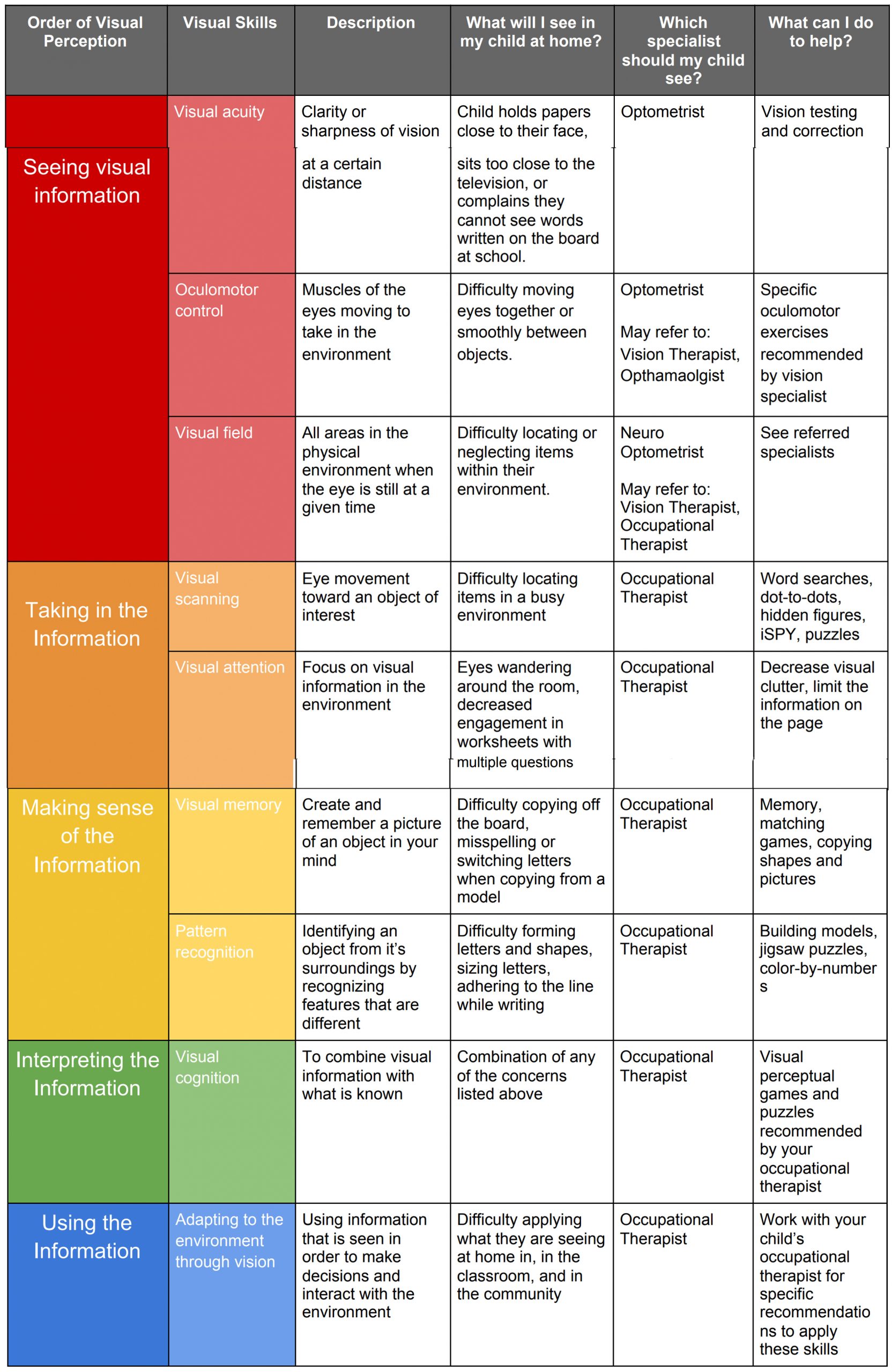So much of what we learn is gathered from what we see around us. Vision is not as simple as just seeing something in front of us. It begins with the structure of the eye and surrounding muscles. We must then be able to move our eyes to search for the item, understand it’s shape/form/what makes it different from its surroundings, focus on the item long enough to store this information, and use the information to interact with the item. Each of these components needs to be accomplished before being able to develop the next. With so many components contributing to vision, it can be hard to know what specifically is affecting your child’s visual development. There are a team of specialists dedicated to fostering your child’s visual development. These specialists include:
- Optometrist- vision testing to identify acuity, nearsightedness, farsightedness, astigmatism, etc.and provide vision correction to manage vision changes
- Opthamologist- diagnose and treat eye diseases and disorders, perform eye surgery, correct vision problems; may be referred to for further testing after seeing an optometrist
- Neuro Optometrist- assess vision related problems associated with neurological diseases, trauma (seizures, stroke, tumors, traumatic brain injury), metabolic, or congenital conditions
- Vision therapist- provide one-on-one skilled therapy to complete oculomotor (eye muscle) exercises and retraining the brain to improve visual skills
- Occupational therapist- provide one-on-one skilled therapy to target skills to take in, make sense of, and interpret visual information that affects functional independence in activities of daily living, academics, play, etc.
Below is a breakdown of the visual skills important to participation in the classroom as a tool to understand what your child may be struggling with, which specialist to see, and how you can help your child.

Occupational therapists are skilled in identifying deficits in visual perception, provide treatments to target these skills, and work with you to make specific recommendations to foster your child’s visual development.
Warren, M. (1993). A Hierarchical Model for Evaluation and Treatment of Visual Perceptual Dysfunction in Adult Acquired Brain Injury, Part 1. American Journal of Occupational Therapy, 47(1), 42-54. doi:10.5014/ajot.47.1.42

Blog by:
Mikaela Carr – OTD, OTR/L
Occupational Therapist
